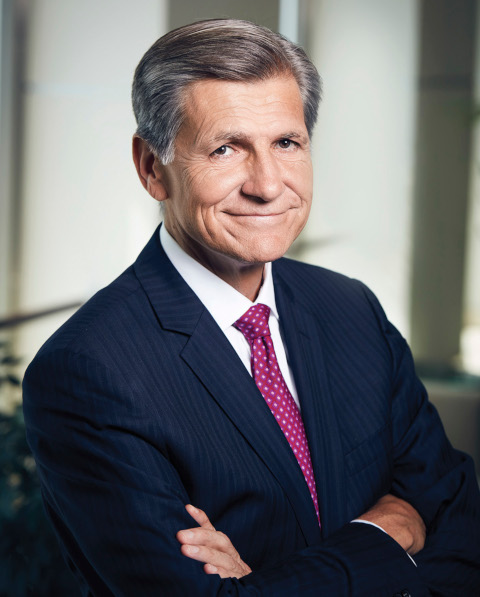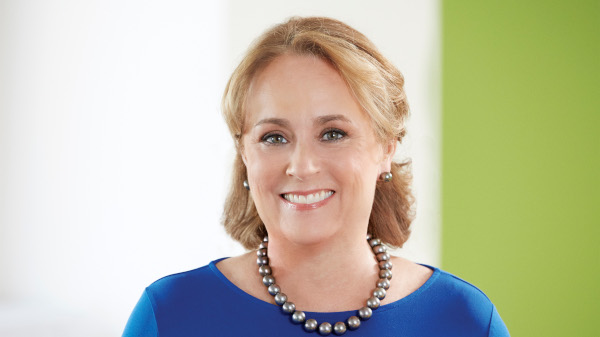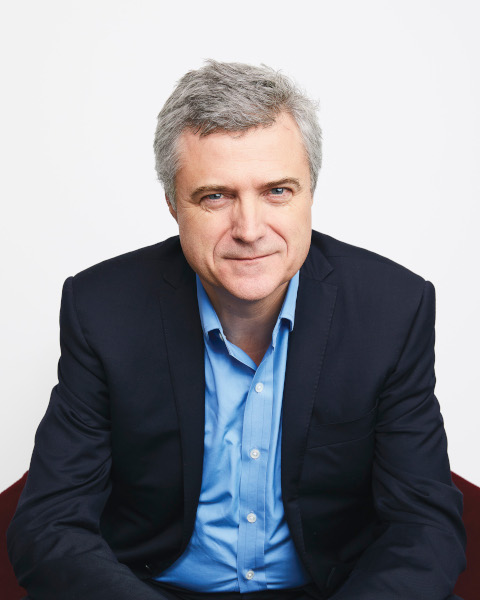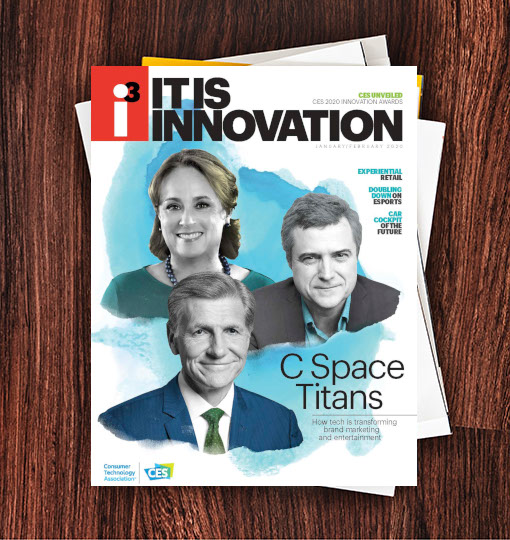Marc Pritchard, a three-decade veteran of P&G, sets the company’s multibillion-dollar media, marketing and advertising strategies, leading marketing innovations for P&G’s portfolio of trusted, quality brands. He joined the company in 1982 as a cost analyst and moved into marketing in 1987. He has 20 years of experience in the beauty and personal care categories, becoming president of Global Cosmetics and Personal Care in 2003. Pritchard served as president of Global Strategy and was named P&G’s chief marketing officer in 2008. He believes in the power of brands to provide people with superior products while also being a force for good in the community.
What is P&G doing to become a force for good and a force for growth?
We’re reinventing brand citizenship by moving from brands that are “all about themselves” to brands that are a “force for good and a force for growth.” Consumers want to know what brands believe in, their values and views, and they buy based on shared beliefs. We’re using our voice in advertising to promote equality. Equality is limited by bias, and the portrayals of people in advertising embed memories into our brains that form bias — so we strive to accurately portray all people — across gender race and ethnicity, sexual and gender identity, ability, religion and age. We also periodically take a stand on brand-relevant issues. For example, Always changed the meaning of the phrase “Like A Girl” and is now ending period poverty by donating pads to young women who miss school because they can’t afford adequate period protection. We’re using our brands to promote sustainability through innovations like Tide and Ariel cold water cleaning, and hair care products made to use without water — designed to promote responsible consumption just by using them.
But we know we can’t do it alone, so we’ve joined industry-wide initiatives for collective action. We’re part of the #SeeHer movement promoting the accurate portrayal of women and girls in advertising and media and #SeeALL promoting the accurate and relevant portrayal of race, ethnicity and all cultures. We’ve committed to equality in the creative supply chain as founding sponsors of Free the Work, to get women and under-represented voices in the director chair. We’ve joined #BrandsforGood to promote sustainable behavior. And we’re part of the Global Alliance for Responsible Media to eliminate toxic content online. Brands are ubiquitous as they touch people every day, often multiple times a day. Imagine the impact if all brands stepped up to be a force for good and a force for growth.

Can you talk about the roadmap that Brand 2030 provides?
Brand 2030 is part of P&G’s Ambition 2030 which aims to make the world a better place through sustainability. Our goal for brands is to have 100% of our leadership brands enable and inspire responsible consumption by 2030. To achieve that goal, each brand establishes a “Brand Ambition” that puts a relevant social or environmental commitment at the heart of the brand’s consumer experience to help solve a sustainability challenge. That inspires action in product and packaging innovation, brand communication, transparency and safety, and reducing supply chain impact to achieve the ambition. Our intent is for leadership brands to create innovative products, solutions and services that make it easy for consumers to responsibly consume products. When they do that, they create value for consumers and society and are truly a force for good and a force for growth.
How is P&G addressing the diversity and inclusion issue?
P&G believes in diversity and inclusion. With over 140 nationalities represented in our workforce, our own diversity helps us reflect and serve consumers around the world with our brands. And while diversity is essential, we believe inclusion changes the game. Every day we strive to get the full value of our diversity through inclusion through an environment where P&G people can be their best, full and authentic selves. But our job doesn’t end there — our belief and commitment extend beyond P&G’s walls. We use our voice in advertising as a force for good to eliminate bias and drive equality and inclusion.
A few examples: SK-II’s Change Destiny campaign rejects the notion that women have an “expiry date” that defines when they’re expected to live up to societal expectation, like when to be married. Olay’s Face Anything campaign shatters norms, rejects conformity, and redefines role models of women living life on their own terms. Secret’s All Strength No Sweat fights for equality, including action to help the U.S. Women’s National Soccer team achieve equal pay. And P&G promotes conversations about racial bias with “The Talk,” highlighting the talk black parents have with their children to help them deal with prejudice. We not only believe in diversity and inclusion; we’ve built it into how we do business every day.
How are you reinventing the agency model to encourage stronger brand stewardship?
We’re reinventing the agency model to create new models for greater creativity and speed at lower cost. We’ve implemented a “fixed and flow” model, investing a “fixed amount” for work that requires experienced creative people, like campaigns, supplemented with a “flow to the work” approach through open-sourcing for fast-cycle creative at the speed of popular culture. For example, SK-II has a fixed contract with Publicis for their Change Destiny campaign, along with other agencies who’ve created brilliant work like #BareSkinChat and #Masterclasses with James Corden, John Legend, Japanese comic Naomi Watanabe and Chinese actress Tang Wei. Agencies are also stepping up with new models, such as Grey Midwest that co-located with Febreze and other brands creating a “borderless” approach and collapsing creativity from months to hours. We’ve co-located with “Publicis Agile Lion” to create fast-cycle work on Crest and Oral B. And we’ve created an entirely new model that brings multiple agencies into one integrated group called “Woven” that’s creating award-winning work like the “It’s A Tide Ad” campaign. Reinventing agency partnerships is saving money and raising the bar on creativity.
How does P&G continue to encourage innovation for its clients?
We are innovating how we innovate, moving from a sequential, phased approach to a “lean” innovation approach used by startups. As a company leadership team, we went to Silicon Valley and learned from the best, including Eric Ries and several successful startups. Lean innovation built on our strengths, like keeping the consumer at the center of everything we do. We focus on identifying the consumer “problem to be solved” and learned a more agile way of working, including fast-cycle learning with minimum viable prototypes where we conduct behavior-based experiments leveraging digital technology. With this new way of working, we now have over 180 experiments.
How is P&G using tech to better help brands get their messages out?
We’re reinventing media from “mass blasting” to mass reach with one-to-one precision using data and technology. We have our own databases that enable us to reach people when and where it matters through automated, algorithm-driven ad placement without annoying and wasteful ad frequency. We’re also integrating cutting-edge digital technology into our products to create irresistible consumer experiences which could eventually replace ads. For example, SK-II has created an immersive augmented reality experience called Future X. It’s an AI-supported shopping experience, with personalized recommendations based on smart scans of your skin, browsing on virtual shelves and shopping through a wave of the hand. And when you take SK-II’s Pitera Essence home, it has smart packaging with IoT technology along with a companion app for personalized skincare tips every day. With immersive experiences like this we can imagine a world where technology creates entirely new ways to engage consumers.
What do you look for at CES?
We are always looking for ideas, inspiration and partners to help us innovate how we innovate. We are always raising the bar to give consumers the highest quality and absolute best benefits they expect and deserve in their product package, communication and shopping experiences with the brand. We see CES as the Consumer “Experience” Show, so we come here to discover new-to-the-world ways to create irresistibly superior consumer experiences.

Diana O’Brien is the Global Chief Marketing Officer for Deloitte, responsible for driving growth across all businesses. O’Brien connects a network of brand, communications, marketing and organizations. Her responsibility is to champion the voice of the customer, surface deep insights with advanced analytics, increase sales velocity, and gain greater competitive advantage with stronger, differentiated experiences. One of Forbes’ World’s Most Influential CMOs, O’Brien also leads the C-Suite CMO Program and serves as an advisory partner to global life sciences clients. O’Brien serves on numerous boards including the Ad Council and Impact Autism Foundation.
What is the role of storytelling in marketing today? Do personal stories resonate more with consumers?
Human beings have always told stories to communicate, and the most effective marketing tells great stories. Today, consumers expect brands to create experiences and products that not only meet their needs, but also anticipate their wants. A more recent expectation is that brands also strive to solve bigger problems in the world, society and the communities where they live and work. If they engage in these higher-level challenges, brands must do it with authenticity. We’ve all seen public missteps where brands use a one-off tweet to try to associate themselves with a movement or an event. Successful brands authentically connect any social impact with their purpose.
What is Deloitte’s business model? How is it disrupting the industry?
As one of the world’s largest professional services firms, our business model is to help our clients solve their biggest challenges. In a time of unprecedented technological innovation and change, how brands, leaders and consumers respond drives disruption. We have the depth across industries and sectors to understand the implications of these responses and we use that knowledge and foresight to advise our clients on how to adapt and move forward and thrive in the face of disruption
How are you using tech tools and various media platforms to reach new audiences?
Like all brands today, we use a wide range of tools and platforms to tell stories, share insights and connect with our clients, both digitally and at live events. Podcasts have been a more recent success for us — whether our own or others we participate in or sponsor. Podcasting isn’t a new medium, but it’s very effective at reaching customers where they are, in the time they have. More than half of the people in the U.S. have listened to a podcast, and something like one in three say they listen at least once a month. Deloitte has over a dozen podcasts in unique topic areas, and they give global reach to our thought leadership.
Digital Reality [augmented reality, virtual reality, mixed reality (MR) and 360-degree video] has become another channel we use both to engage audiences at live events and share our content. There is no better way to capture someone’s attention in a noisy and crowded event space than to immerse them in your world in a different reality.
How is Deloitte addressing diversity and inclusion?
Deloitte has been helping shape what inclusion looks like since 1993. We were the first professional services organization to establish women’s and diversity initiatives. A lot has changed since then, and our leaders remain committed to evolve and innovate in this space and keep the core tenet of empowering our people and fostering an inclusive culture. That’s why we’re on best-places-to-work lists, like Working Mother’s 100 Best Companies, Best Companies for Working Mothers and FORTUNE’s 100 Best Companies to Work For.
What do you look for at CES?
To be inspired and to connect for impact. CES provides so many opportunities to learn about new technologies and how consumers’ use of tech disrupts different industries and business models. It is easy to be inspired by the many companies that anticipate and even define technology shifts and move their businesses into the future. And nothing is more important and satisfying for me than to connect with clients and have compelling conversations about what we are seeing and what it means. That is how you connect for impact in our world today.

Since 2018, Mark Read has been CEO of WPP but previously served as executive director of WPP plc and head of strategy and CEO of WPP Digital, where he helped the company move into technology by acquiring 24/7 Real Media, the founding of data-driven creative network POSSIBLE and the launch of Stream, WPP’s “unconference.” In 2015, he was appointed Global CEO of Wunderman, which became Wunderman Thompson in 2018, one of WPP’s largest businesses, with more than 20,000 people across 90 markets. Its clients include Microsoft, Dell, Shell, HSBC, BT and Adidas. In 2018 he was named joint chief operating officer of WPP, with responsibility for clients, operating companies and people.
How has tech changed advertising and PR? How are you using data to refine messaging?
Tech has changed every aspect of our business, not just traditional advertising and PR. The strength of our offerings began in 2007 with the acquisition of 24/7 Real Media, giving us the “industrial scale” ad tech capabilities from which we have developed Xaxis. Since then, we have made further acquisitions and invested in internal development efforts — particularly more recently in AI and automation. These capabilities allow us to deliver audiences more effectively and efficiently to clients, and deliver their messages to their consumers in a more creative, timely and useful fashion.
How does WPP help its clients’ messages get heard in such a cluttered marketplace and with so many channels?
Creativity is at the heart of what we offer clients and it’s never been more important than in today’s environment. With thousands of commercial messages shouting for attention, it’s the truly creative ideas that break through and have an impact.
How is WPP addressing the diversity and inclusion issue?
WPP’s new culture is one founded on the values of open, optimistic and extraordinary. It’s important for us that our people are diverse and that our culture is inclusive, and we don’t believe that you can have one without the “us.” It’s important, not just because it is the right thing to do, but because it’s what we need if the work that we do for our clients is going to represent society and resonate with consumers. We have three key priorities:
First, we are resetting expectations of what it means to lead and what an inclusive leader looks like. Leaders create opportunities for diverse teams that are not only expected to excel but feel they belong as their authentic selves. Second, we are building an open community based on a campus model that allows us to expose employees to broader opportunities to communicate, collaborate, support and connect. Our best work comes when every person is an active contributor to our rich culture, bringing their unique perspectives and voices. And third, we are working to address the structural barriers that prevent a diverse workforce at all levels, looking at areas such as flexible working and parental leave to make sure that they support our ambition of being a fully inclusive workforce.
How does WPP continue to find the creative spark for its clients?
WPP’s most important competitive advantage is creativity. It is what makes WPP special and what differentiates us from consultants and other professional services firms. The message we hear from clients is very consistent: they want the best creative ideas. These ideas aren’t just expressed in 30 second TV ads anymore but in the wide variety of channels and media available. The spark to come up with the best ideas comes from within our people and from collaboration. It’s not just that our people need to be extraordinary, it’s also that when they come together to create ideas, extraordinary work will result.
How are you reinventing the agency model to encourage stronger brands?
Over the past year, we’ve been busy reinventing our model. We have been integrating our companies to take out the artificial distinction between creative and digital — hence VMLY&R and Wunderman Thompson — and these two new companies are resonating well with clients, winning new business and attracting great talent to work. We’re investing in technology across the company, so that we don’t reinvent it multiple times, but have one platform that helps all our agencies and clients connect.
What do you look for at CES?
The new technology products and services that I need to know about to shape how WPP invests, the plans we need to put together for our clients, and the partners who we need to get to know.

i3, the flagship magazine from the Consumer Technology Association (CTA)®, focuses on innovation in technology, policy and business as well as the entrepreneurs, industry leaders and startups that grow the consumer technology industry. Subscriptions to i3 are available free to qualified participants in the consumer electronics industry.